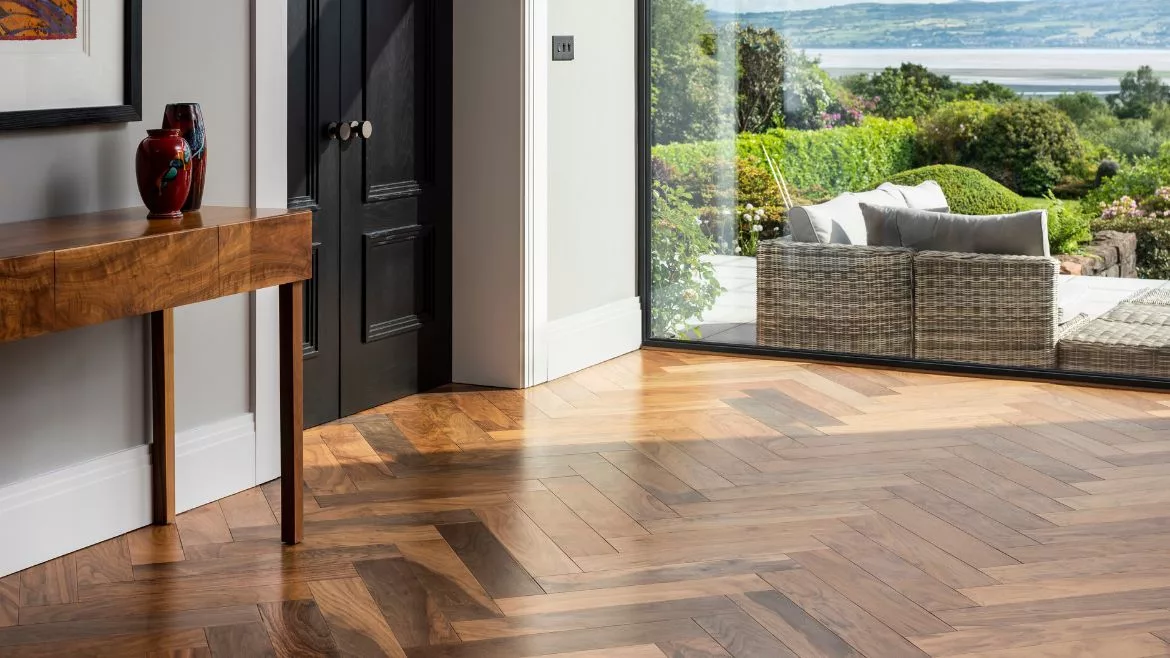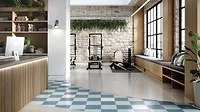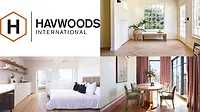Havwoods Shares Wood Flooring Design Trends for 2023

A walnut herringbone wood floor by Havwoods. Photo: Havwoods.
The desire for authenticity in design in 2023 is real, and in no other flooring category is it more apparent than hardwood. As interiors continue to move away from cold, white or gray spaces, more residential and commercial designers are embracing natural materials, warmer finishes and beautiful textures.
Havwoods International, a wood flooring company serving homeowners, architects, designers, is capitalizing on this trend with unique design solutions for residential and commercial spaces. The company was founded in the United Kingdom in 1975, and after growing a European and Australian presence, opened Havwoods North America in 2016. Floor Trends spoke with Havwoods Global Product Director Anthony Scott to discover this year's market trends wood flooring for commercial and residential.
Floor Trends: What are you seeing for wood floors in 2023?
Scott: We work in the multifamily hospitality sectors, commercial workspace sectors, and residential. They're all moving towards the warmer tones and the smoked fumed boards. There tends to be a lot of biophilic design. It isn't going away and we see a lot of the patterned wall coverings like the green foliage designs in ceramic tiles. They sit so nicely against the walnuts, the really wall warm American walnuts—some of the fume boards that we do. You just can't achieve that richness and depth of color with a stain. So by doing the extra smoke and fuming processes, you get that real kind of luxurious and rich feel, and we feel that they're going to be really on trend this year. We've already seen a huge demand in samples for them. So designers are obviously already specifying products like that.
Floor Trends: Why are they asking for those products?
Scott: I think it's fair to say that the grays have been around quite a while now, and I feel like designers probably feel like they need a very new direction. Obviously the grays have been done in various formats and they are reinventing warmer grays, lighter grays mixed in with different kind of tunnel grays, etcetera, and I feel like this is a direct shift away from all that. It's definitely a move away to something completely new rather than sticking with the grays, the cooler tones. The Scandinavian look will probably always fit the bill somewhere for a lot of designers, but certainly some designers are probably wanting a shift, I think.
Floor Trends: Are your customers asking anything different in terms of features or construction this year?
Scott: So the general consensus is for people to go for thinner overall—not too thin, where it's detrimental to the acoustic and feel and structural integrity of the product, but thinner more from a sustainability point of view. So 6-mil layers are definitely being phased out by many designers now and they tend to be going for the half-inch boards with a 4-mil layer so that you still get multiple sandings out of it later on. The longevity of it is not dissimilar to a three-quarter inch board.
The other innovation that we had coming through this year was an improvement on our magnetic backed flooring system. We use that on a raised access floor, particularly in workspace environments. We've had that specified in a lot of Google offices, among others. And while the product was fine, this is a 2.0 version of it. We've improved the and groove on it, so it makes it easier to install, easier to lift up. The idea of the magnetic floor is that obviously it's only semi-permanent, so you can lift boards up, you can take the floor with you if your office relocates, or if it's just for accessing cables under the floor, you've got that flexibility there as well. It's a real game changer in that industry. There's other companies that provide a similar product but none where it's a true floorboard. There's a lot of furniture panel that are made to look like a floorboard, but a true floorboard with a magnetic back.
Floor Trends: How about sustainability?
Scott: Full cyclicity of product is really important to us. We're even looking at trying to find a way to recycle existing floors as well, so where people are lifting old floors where they are reusable or where we can recycle them, we'll do.
Floor Trends: And how important is that concept becoming to your customers?
Scott: It is important to our customers—designers in particular. I don't think commons are quite there yet, but particularly designers and in terms of lead accreditation, anything to do with sustainability is really important. FSC certified, which obviously we got big for, but then full life cycle of products is now the next kind of step.
Floor Trends: What are you seeing for wood flooring in the commercial market?
Scott: Workspace hasn't slowed down. Workspace has been one of the biggest areas for us now that everyone is tending to go back to the office. Certainly most companies are trying to encourage workers back to the work, the office environment, and so to be able to do they've had to renovate their spaces to make sure that they're not only fit for purpose in terms of from a covid point of view, but making them nice places to work. Everyone's had the luxury of working from home, very convenient, etcetera, so the refurbishment of workspace has definitely benefited us. Multifamily is going very well. We don't see any decline in that area, to be honest. And hospitality is still pretty good, to be fair. I'd say workspace is probably the standout one, but all sectors seem to be doing okay still.
Floor Trends: What about multifamily?
Scott: Design—it tends to be the medium to higher end projects. Some of the lower-end tend to maybe put laminates or LVT, but certainly if developers are now wanting to attract that particular buyer, they are definitely going for wood. They're definitely upgrading their specs and going forward.
Floor Trends: What other trends are you seeing?
Scott: We've seen the patterns threatening to come in over the last couple of years, but they seem to be even stronger certainly in the last few months. I think that's going to be one of the biggest trends. We've got an exciting new pattern that's kind of a flower shape—a patented design that it geometrically works as a repeat pattern but looks like kind of flowers. It's really unique. They could be installed as a feature within a plank floor, which would really stand out, but then they could also be installed repetitively across the full floor, either with or without a border. And we do the matching plank borders as well. We also have chevron, herringbone plank formats, weaves and diamonds as well. So you could kind of really go crazy, if you wanted to, across your commercial space.
Floor Trends: Are these also being installed on walls?
Scott: There's no reason why they couldn't be installed on walls. Wall panels is a big area where we've expanded into recently, so we now always did the furniture panel, which is just kind of our veneered regular panels and which can be used for cabinet making or just literally wall feature panels. But just recently the fluted panel seems a real big trend, especially if if it has acoustic properties as well.
Floor Trends: What's your outlook for business this year?
Scott: We know that there's headwinds coming in the market that that's for sure. We don't necessarily feel like it's going to be detrimental to our business, in particular just because we have such a wide range of products. We do 450 different SKUs, plus we do custom as well. So I think 30% of our sales are custom. We pitch ourselves as solution providers. Everyone from an end-user through to the Google workspace can literally approach Havwoods and get a floor that's fit for purpose and the right budget.
Looking for a reprint of this article?
From high-res PDFs to custom plaques, order your copy today!



.webp?height=200&t=1761765432&width=200)